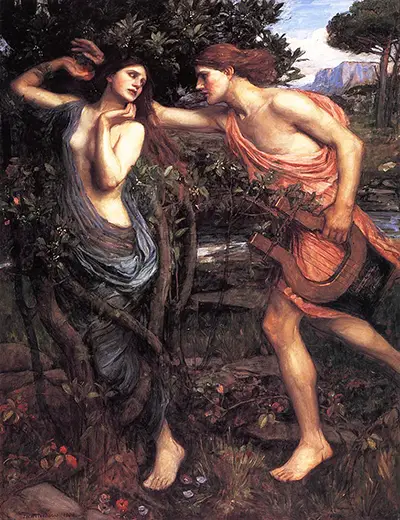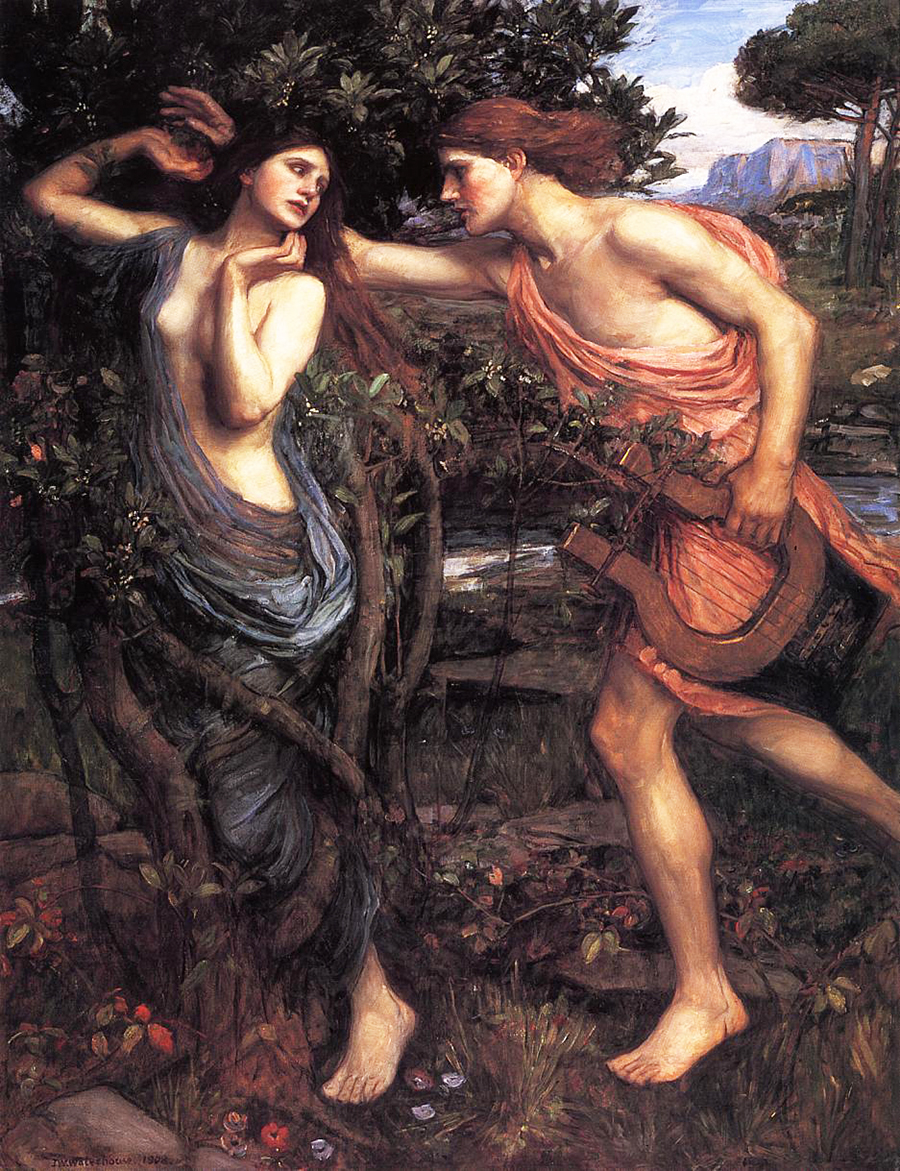He does not spare the amount of romance and seduction that the painting exhibits, and this might be what makes the painting a masterpiece on its own. It undoubtedly has the ability to capture attention and raise eyebrows with the wonder of the intriguing story behind the elegant woman and the young man clearly in pursuit of her attention. The painting depicts a beautiful woman, Daphne, and a young man, Apollo. Her elegance is seen in her features and her beauty complemented by her pearl white skin and long elegant hair. The painting shows realism and motion, a trait that John William was able to achieve. This is seen by the numerous details that he does not fail to notice and effectively illustrate: from the leaves to the muscles on Apollo's legs.
Motion is depicted by the river that flows just behind them and the stance of Apollo that shows his relentless pursuit. Different parts of the painting enhance acknowledgement of the story behind the artistic piece. For instance, the tree that seems to have its branches around Daphne, and the river, represents her father's domain. The colours used are nothing short of vibrant. Waterhouse was known to be very passionate about the history and tales of the Greek gods and goddesses. This was, therefore, the major source of inspiration for the artist to create this breathtaking painting. The story that moved John William immensely was that of Daphne, the daughter of Peneus, the god of the river. Daphne shows resemblance to many aspects that John William found intriguing in women, which may be the cause of picking her as his subject.
Having significant similarities to the goddess Artemis, Daphne was beautiful and a virgin huntress filled with adventure and roaming in the wilderness. The story of Apollo and Daphne began when Eros, the god of love, shot Apollo with one of his gold-tipped arrows, making him fall hopelessly in love with Daphne. The arrow that shot Daphne, on the other hand, made her more indifferent to the prospect of love, but still, Apollo pursued her relentlessly. In a desperate bid to escape the love that Apollo showed her, Daphne turned herself into a tree of the Laurel kind on the riverbank of her father. The oil canvas painting Apollo and Daphne is currently located in a private collection. Besides Waterhouse, some related artworks that might catch your attention could be the likes of The Dance Foyer at the Opera on the Rue le Peletier, The Millinery Shop and Dancers on the Stage by Edgar Degas.


